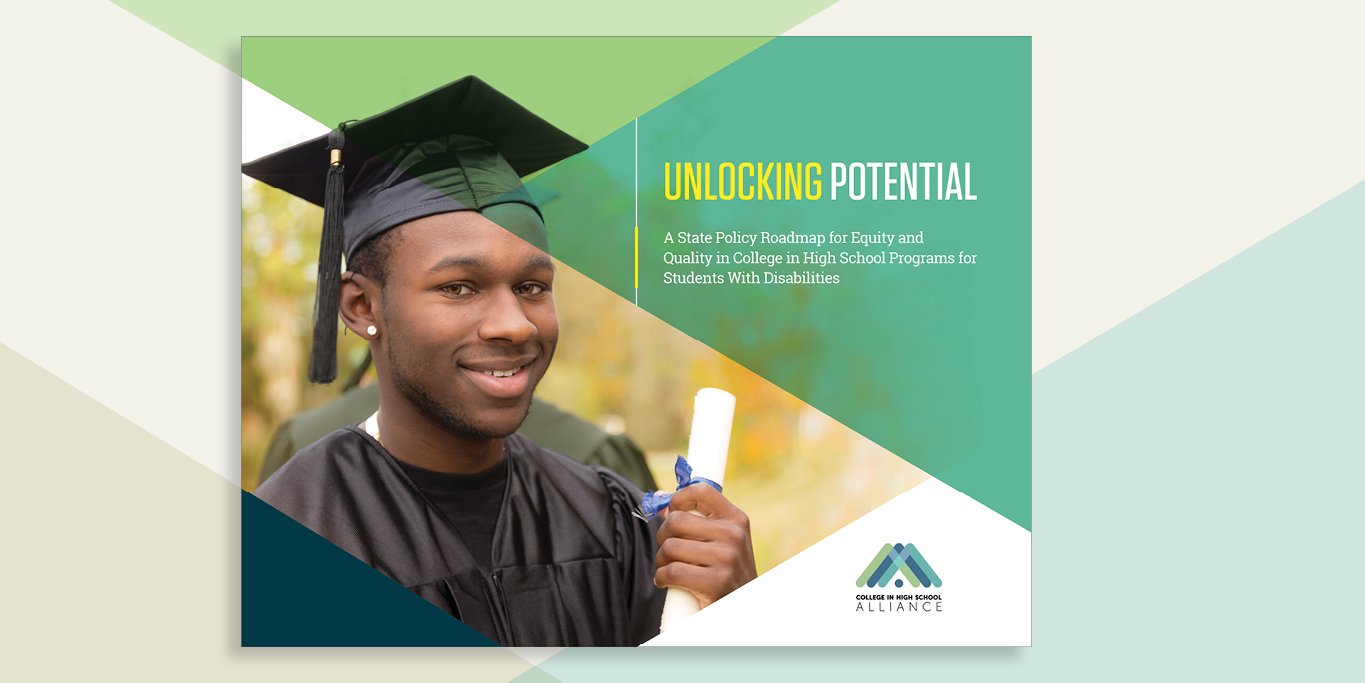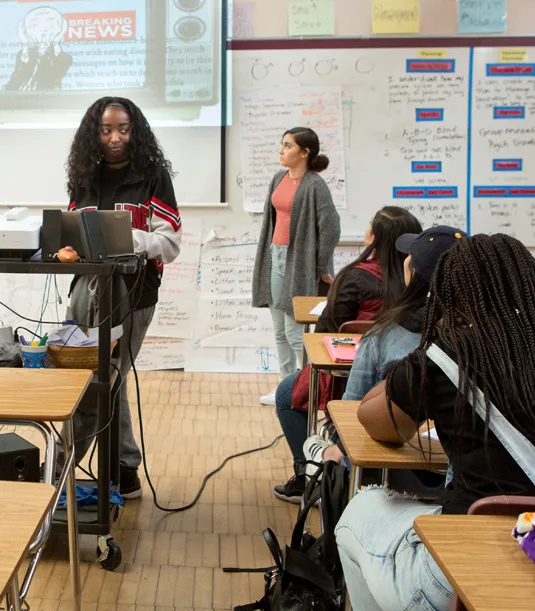
The College in High School Alliance (CHSA) is excited to release an addendum to its state policy roadmap for equity and quality for college in high school programs focused on students with disabilities. The report is entitled Unlocking Potential: A State Policy Roadmap for Equity and Quality in College in High School Programs for Students with Disabilities.
State leaders are increasingly working to expand access to and improve equity in college in high school programs that provide secondary students with the opportunity to earn college credit. These courses provide students with valuable opportunities to personalize their K–12 learning journey and have been shown to improve postsecondary outcomes. However, students with disabilities are too often excluded from these opportunities.
This paper serves as a supplement to CHSA’s previous release of Unlocking Potential: A State Policy Roadmap for Equity and Quality in College in High School Programs. Using the same six-part framework, this paper specifically addresses policy solutions to expand access to college in high school programs such as dual enrollment, concurrent enrollment, and early college high school for students with disabilities.
In addition to providing new data around the lack of access nationwide to college in high school programs for these students, the paper provides a number of policy recommendations and examples of states that already have these practices in place to expand access to more students with disabilities and reduce the number of students who are “shut out” from participating in these programs.
This report was authored by Karla Phillips-Krivickas of Think Inclusion and KnowledgeWorks. Special thanks to John Fink from the Community College Research Center for his partnership with CHSA in developing the first analysis of access by students with disabilities to college in high school programs, drawn from the Civil Rights Data Collection. For more of John’s data work on dual enrollment access by race, gender, disability status, and English Language Learner status, click here.

